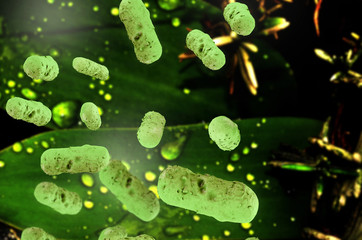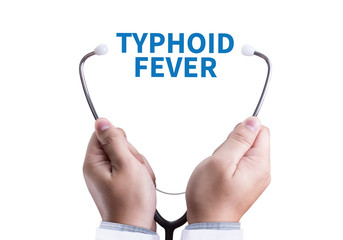Typhoid: what you should know

Typhoid is a bacterial infection, that is characterized by high fiver, headache, abdominal pain, diarrhea, and vomiting. It is caused by the bacteria Salmonella typhi growing in the intestines and blood.
Typhoid fever spreads through contaminated food and water or through close contact with someone who's infected. People living in areas with poor sanitation and poor hygiene usually suffers from this ailment.
Most people with typhoid fever feel better within a few days of starting antibiotic treatment, although a small number of them may die of complications. Vaccines against typhoid fever are available, but they're only partially effective. Vaccines usually are reserved for those who may be exposed to the disease or are traveling to areas where typhoid fever is common. Untreated, it is fatal in around 25 percent of cases.
Causes
Typhoid is caused by the bacteria S. typhi and spread through food, drinks, and drinking water that are contaminated with infected fecal matter. Washing fruit and vegetables can spread it, if contaminated water is used.
Some people are asymptomatic carriers of typhoid, meaning that they harbor the bacteria but suffer no ill effects. Others continue to harbor the bacteria after their symptoms have gone. Sometimes, the disease can appear again.
People who test positive as carriers may not be allowed to work with children or older people until medical tests show that they are clear.
Symptoms
Symptoms
It can take a week or two after infection for symptoms to appear. Some of these symptoms are:
- high fever, Typhoid fever is particularly high, gradually increasing over several days up to 104 degrees Fahrenheit, or 39 to 40 degrees Celsius.
- weakness
- stomach pain, abdomen is distended and painful in the right lower quadrant, where borborygmi can be heard.
- headache
- poor appetite
- rash
- fatigue
- confusion
- constipation, diarrhea
- Respiratory diseases such as pneumonia and acute bronchitis
- kidney or bladder infection
- pancreatitis
- myocarditis
- endocarditis
- delirium, hallucinations, paranoid psychosis
Diagnosis
Typhoid diagnosis is made by any blood, bone marrow or stool cultures
and with the Widal test. When a contaminated food or water is consumed,
the Salmonella bacteria invade the small intestine and enter the
bloodstream temporarily. The bacteria are carried by white blood cells in the liver, spleen,
and bone marrow, where they multiply and re-enter the bloodstream. at
the later stage of the sickness, the bacteria invade the gallbladder, biliary system, and the lymphatic tissue of the bowel. Here, they multiply in high numbers. The bacteria pass into the intestinal tract and can be identified in stool samples. If a test result isn't clear, blood or urine samples will be taken to make a diagnosis.
Typhoid diagnosis is made by any blood, bone marrow or stool cultures and with the Widal test. When a contaminated food or water is consumed, the Salmonella bacteria invade the small intestine and enter the bloodstream temporarily. The bacteria are carried by white blood cells in the liver, spleen, and bone marrow, where they multiply and re-enter the bloodstream. at the later stage of the sickness, the bacteria invade the gallbladder, biliary system, and the lymphatic tissue of the bowel. Here, they multiply in high numbers. The bacteria pass into the intestinal tract and can be identified in stool samples. If a test result isn't clear, blood or urine samples will be taken to make a diagnosis.
Treatments
A blood test can confirm the presence of S. typhi. Typhoid is treated with antibiotics such as azithromycin, ceftriaxone, and fluoroquinolones.It’s important to take all prescribed antibiotics as directed, even if you feel better. A stool culture can determine if you still carry S. typhi.
Prevention
Proper sanitation and hygiene are important to prevent typhoid. Typhoid can only spread in environments where human feces are able to come into contact with food or drinking water. Careful food preparation and washing of hands are crucial to prevent typhoid.Countries with less access to clean water and washing facilities typically have a higher number of typhoid cases, therefore proper boiling of water can go along way to prevent typhoid developments.


No comments:
Post a Comment